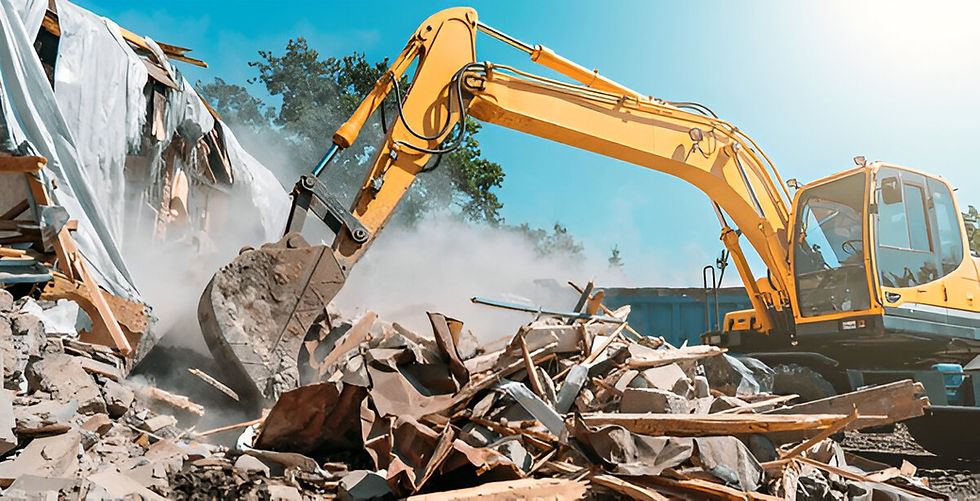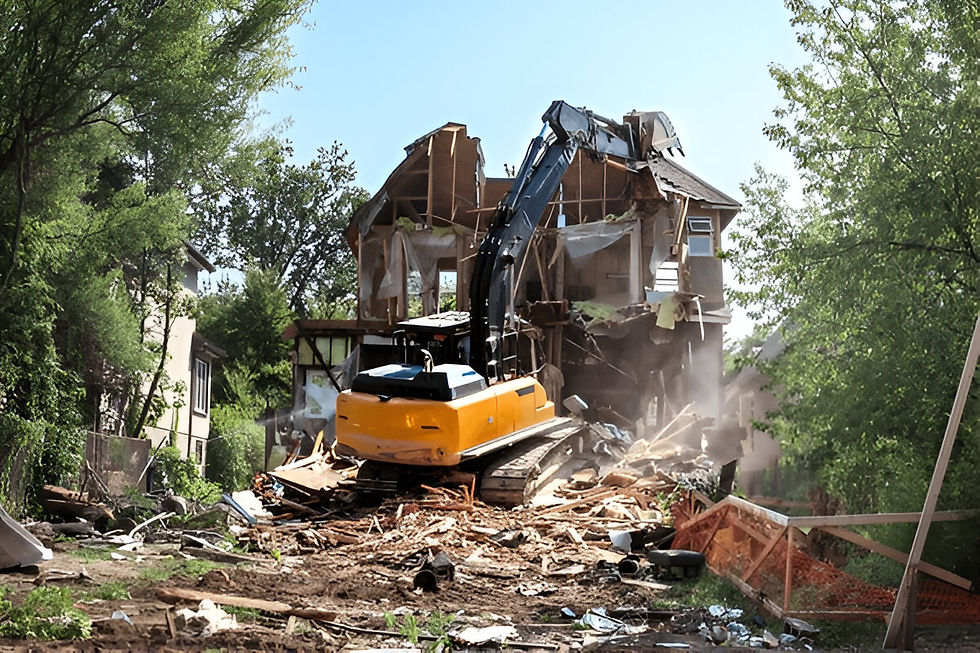Step-by-Step House Demolition Checklist
- Emma Smith
- Aug 7
- 4 min read
Updated: Nov 4

Demolishing a house is a major undertaking that requires careful planning, adherence to regulations, and proper execution. Whether you're clearing land for new construction or removing an unsafe structure, following a structured demolition checklist ensures the process is safe, efficient, and compliant with local laws.
Research Local Regulations and Obtain Permits
Before any demolition work begins, it’s essential to research local building codes and secure the necessary permits. Many municipalities require demolition permits to ensure safety and environmental compliance. Failing to obtain proper approvals can result in fines, legal issues, or forced work stoppages.
Contact your local building department to determine permit requirements, zoning restrictions, and any special conditions for demolition. Some areas may also require inspections before, during, and after demolition. Additionally, check if there are historical preservation laws that could affect your project.
Hire a Professional Demolition Contractor
Unless you have experience in demolition, hiring a licensed and insured demolition contractor is highly recommended. Professionals have the expertise, equipment, and knowledge of safety protocols to handle the job efficiently.
When selecting a contractor:
Verify their license, insurance, and experience with similar projects.
Request references and check past client reviews.
Obtain multiple quotes and compare services.
Ensure they follow OSHA safety standards.
A reputable contractor will also assist with permit applications and hazardous material assessments.
Conduct a Hazardous Materials Inspection
Older homes often contain hazardous substances such as asbestos, lead-based paint, or mold. Disturbing these materials without proper precautions can pose serious health risks and legal consequences.
Schedule a professional inspection to identify any hazardous materials before demolition begins. If asbestos or lead is found, a certified abatement team must remove it safely before demolition proceeds. Skipping this step can lead to toxic exposure and regulatory penalties.
Notify Utility Providers and Disconnect Services
Utilities must be properly disconnected to prevent gas leaks, electrical hazards, or water damage during demolition. Contact utility companies to shut off and cap:
Electricity – Prevent live wires from causing shocks or fires.
Gas – Avoid leaks that could lead to explosions.
Water & Sewer – Prevent flooding and contamination.
Telecommunication Lines – Ensure internet, phone, and cable lines are safely removed.
Never assume utilities are fully disconnected without confirmation from the providers.
Secure the Demolition Site
A safe demolition site prevents accidents and unauthorized access. Before work begins:
Erect fencing or barriers around the property.
Post clear warning signs to keep bystanders away.
Secure adjacent structures if the demolition is near other buildings.
Protect sidewalks and roads from debris spills.
If the house is in a residential area, notify neighbors about the demolition schedule to minimize disruptions.
Choose the Right Demolition Method
The demolition method depends on the house’s size, location, and materials. Common techniques include:
Mechanical Demolition
Uses excavators, bulldozers, and wrecking balls.
Best for large, standalone structures with space for heavy machinery.
Deconstruction (Selective Demolition)
Involves carefully dismantling the house to salvage reusable materials.
Eco-friendly and cost-effective for partial demolitions.
Implosion (Controlled Explosion)
Rare for residential projects; used for large buildings in urban areas.
Requires expert engineers and strict safety measures.
Consult with your contractor to determine the best approach for your project.
Execute the Demolition Safely
Once preparations are complete, the actual demolition begins. Key safety measures include:
Workers wearing protective gear (hard hats, gloves, respirators).
Using machinery like excavators with demolition shears for precision.
Avoiding unstable structures until properly supported.
Monitoring dust and noise levels to comply with local regulations.
The demolition should proceed systematically, starting from the top down to minimize uncontrolled collapses.

Manage Debris and Waste Removal
Demolition generates large amounts of debris that must be disposed of properly. Steps for efficient waste management include:
Sorting materials for recycling (wood, metal, concrete).
Renting dumpsters or hiring a waste removal service.
Ensuring hazardous waste (asbestos, chemicals) is disposed of legally.
Checking landfill requirements for non-recyclable debris.
Many contractors offer recycling services, which can reduce disposal costs and environmental impact.
Conduct a Final Site Inspection
After demolition, a thorough site inspection ensures:
All debris has been removed.
Foundations or basements are properly filled or leveled.
Underground utilities are marked for future construction.
The site complies with local cleanup standards.
Some municipalities require a final inspection before issuing a clearance certificate.
Prepare for the Next Phase of Construction
Once demolition is complete, the site should be ready for new construction or landscaping. Additional steps may include:
Grading the land for proper drainage.
Testing soil stability if building a new structure.
Securing the site with temporary fencing if construction is delayed.
Keeping the site clean and organized helps prevent accidents and delays in future work.
Conclusion
A successful house demolition requires careful planning, adherence to safety regulations, and proper execution. By following this step-by-step checklist, you can avoid common pitfalls, ensure compliance, and prepare the site for its next use.
Whether you're a homeowner or a contractor, taking the time to plan each phase of demolition will save money, reduce risks, and lead to a smoother project overall. Always prioritize safety, environmental responsibility, and professional demolition expertise for the best results.
With the right preparation, your demolition project can be completed efficiently, paving the way for new construction or land development.
.png)







Comments